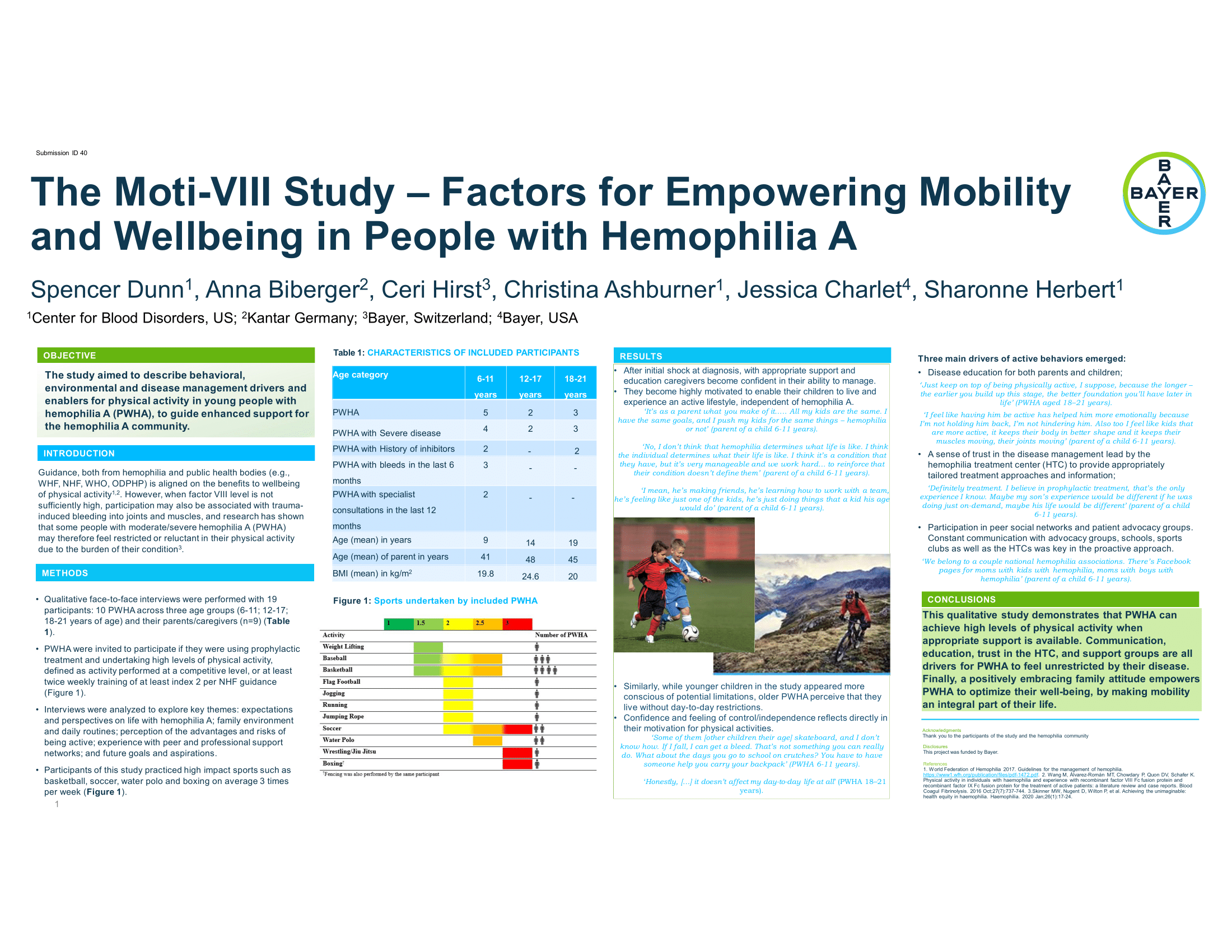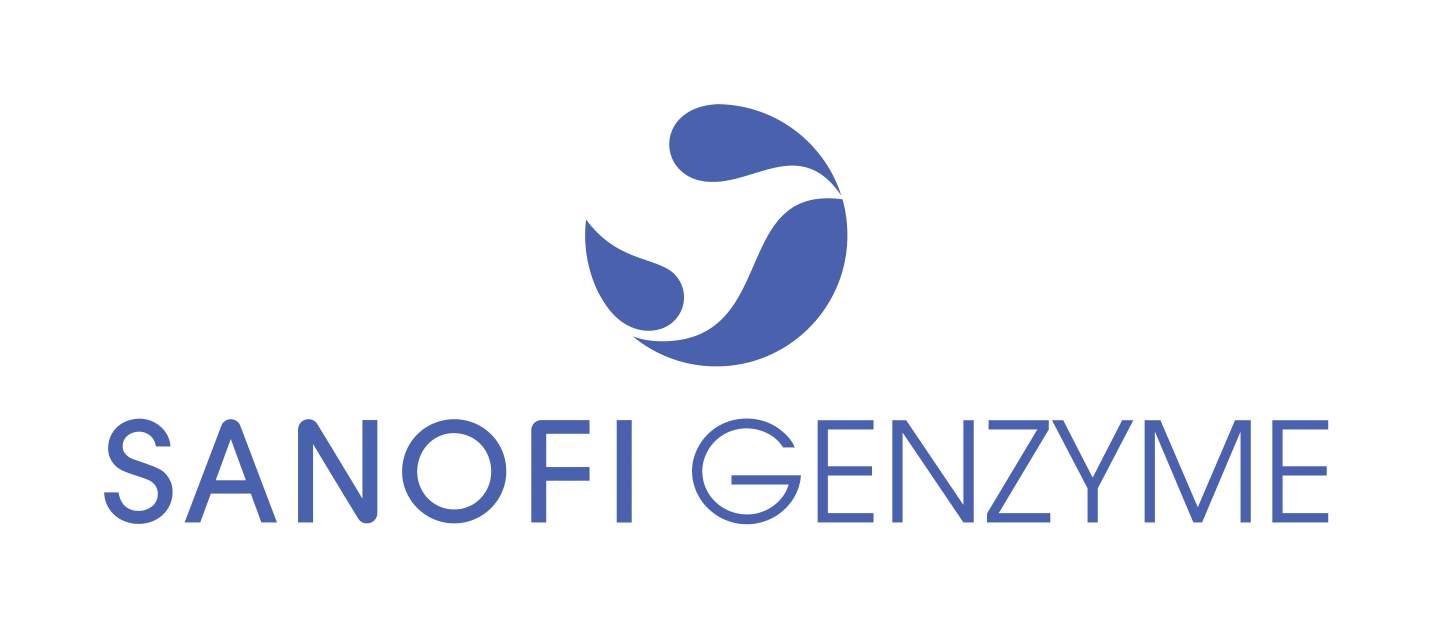National Hemophilia Foundation (NHF) - Posters
The Moti-VIII Study Factors for Empowering Mobility and Well-being in Hemophilia A |
|
|
|

|
Objective:
Guidance, both from hemophilia and public health bodies (eg WHF, NHF, WHO, ODPHP), is aligned on the benefits to wellbeing of physical activity. However, research has shown that some people with moderate/severe hemophilia A (PWHA) may feel restricted or reluctant in their physical activity due to the burden of their disease. We aimed to describe behavioural, environmental and disease management drivers and enablers for physical activity in young PWHA, to guide enhanced support for the hemophilia A community.
Methods:
Qualitative face-to-face interviews were performed with 19 participants: 10 PWHA across three age groups (6-11; 12-17; 18-21 years of age) and their parents/caregivers (n=9). PWHA on were invited to participate if they were using prophylactic treatment and undertaking high levels of physical activity, defined as activity performed at a competitive level, or at least twice weekly training of at least index 2 per NHF guidance. Participants of this study practiced high impact sports such as basketball, soccer, water polo and boxing on average 4 times per week. Interviews were analysed to explore key themes: expectations and perspectives on life with hemophilia A; family environment and daily routines; perception of the advantages and risks of being active; experience with peer and professional support networks; and future goals and aspirations.
Summary:
When a child is diagnosed with hemophilia A, parents/caregivers reported shock and sadness about their child having a lifelong disease, and helplessness due to lack of experience. However, after 2-3 years, a positive shift in their comfort, confidence, and ability to manage evolves. They become highly motivated to enable their children to live and experience an active lifestyle, independent of hemophilia A. Similarly, while younger children in the study appeared more conscious of potential limitations, older PWHA perceive that they live without day-to-day restrictions. Their level of confidence and feeling of control/independence reflects directly in their motivation for physical activities, which they view as critical for physical, social and emotional well-being.
Three main drivers of these behaviors emerged: (1) disease education for both parents and children; (2) a sense of trust in the disease management lead by the hemophilia treatment center (HTC) to provide appropriately tailored treatment approaches and information; and (3) participation in peer social networks and patient advocacy groups. Constant communication with advocacy groups, schools, sports clubs as well as the HTCs was key in the proactive approach.
Conclusions:
This qualitative study demonstrates that PWHA can achieve high levels of physical activity when appropriate support is available. Communication, education, trust in the HTC, and support groups are all drivers for PWHA to feel unrestricted by their disease. Finally, a positively embracing family attitude empowers PWHA to optimise their well-being, by making mobility an integral part of their life.



